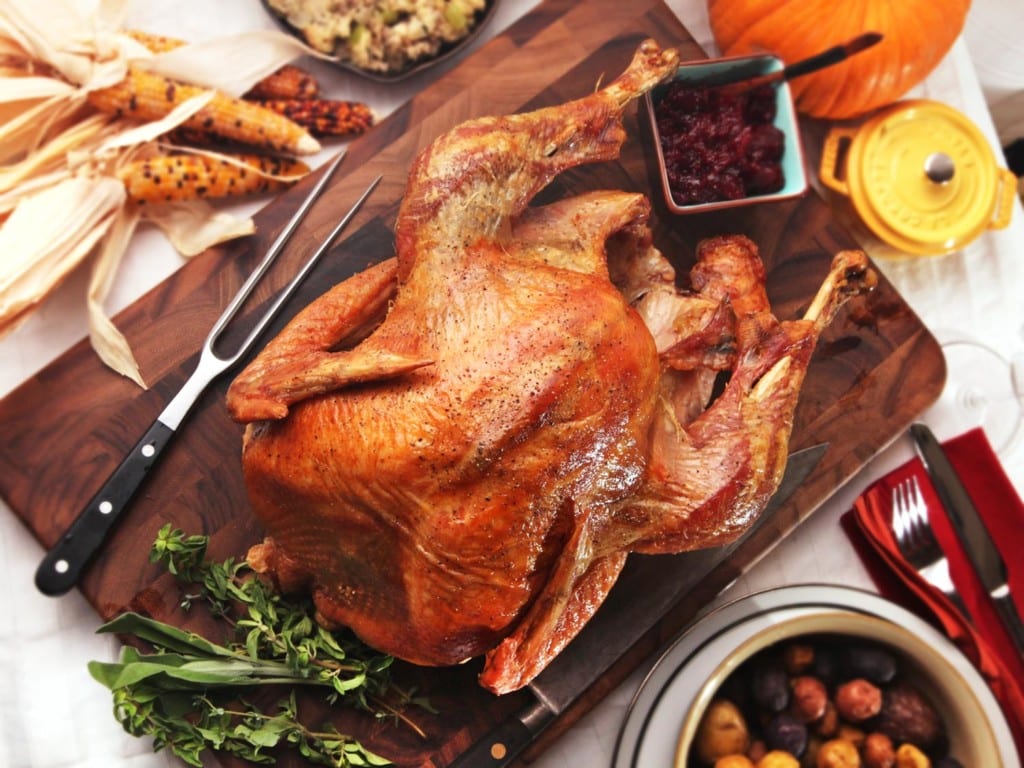Take One Turkey
By Phil Gilbraith, Inns of Distinction
The traditional Christmas Turkey can daunt the most assured of family cooks so following these useful tips for a slightly less stressful time in the kitchen.
How many times have we sat down on Christmas day looking forward to a classic feast of turkey with all the trimmings, and how many times has the reality lived up to the expectation? Probably not that many and this is because turkey is not an easy bird to roast well. Proportionally large breasts compared to legs can mean dried out brown meat and the natural leanness of the bird can lead to a less than juicy final results. By following some or all of the tips below your chances of a crispy skinned, juicy fleshed bird on your festive table will be improved.
Most of the tips are focussed on the preparation of the bird before cooking and so can be done ahead of time. The starting point is to source the best quality turkey you can. As always your first port of call should be your butcher, his knowledge and skills are a great resource at your disposal.
1. The size
Try to find a bird that is slightly larger that you think you may need. Small turkeys are more vulnerable to drying out if slightly overcooked. Having said this, don’t buy a bird that you can’t close the door on and if cooking for many, consider two birds.
3. The drying
After the bringing thoroughly pat him or her dry with kitchen paper, otherwise the first part of the cooking process will be steaming not roasting and your dreams of crisp skin will be shattered!
5. The stuffing
I won’t bore you with my favourite recipe for stuffing (chicken livers, smoked garlic and thyme if you are interested), everyone has their own favourite, or Granny’s tried and tested or Uncle Jeff’s random concoctions or Paxo! The key with stuffing is to be sparing in the bird. By all means add it to the cavity but don’t fill more than half way. Or cook you stuffing separately, it’s better that way.
2. The Brine
Brining your turkey really does make a difference. Submerge in a bucket of salted water overnight. This not only imparts flavour but also leads to a tighter and juicier fleshed bird. It is important to dry your turkey after its bath.
4. The buttering
As we know turkey tend toward leanness, to counteract this it is always advisable to ass a little fat to help things along. My preference is to squash in a layer of slightly softened butter between the skin and breast meat.
6. The trivet
On the bottom of your roasting tray put a layer of roughly chopped root vegetables; carrots, onions, garlic, leeks are all great, along with a couple of sprigs of hardy herbs like bay, rosemary or thyme and add to this giblets. This pile of goodness serves two purposes. One, lift the bird off the tray so it cooks in an even fashion and two, and most importantly, without this your gravy will not be spoken with in awed, hushed tones at Christmasses to come…






